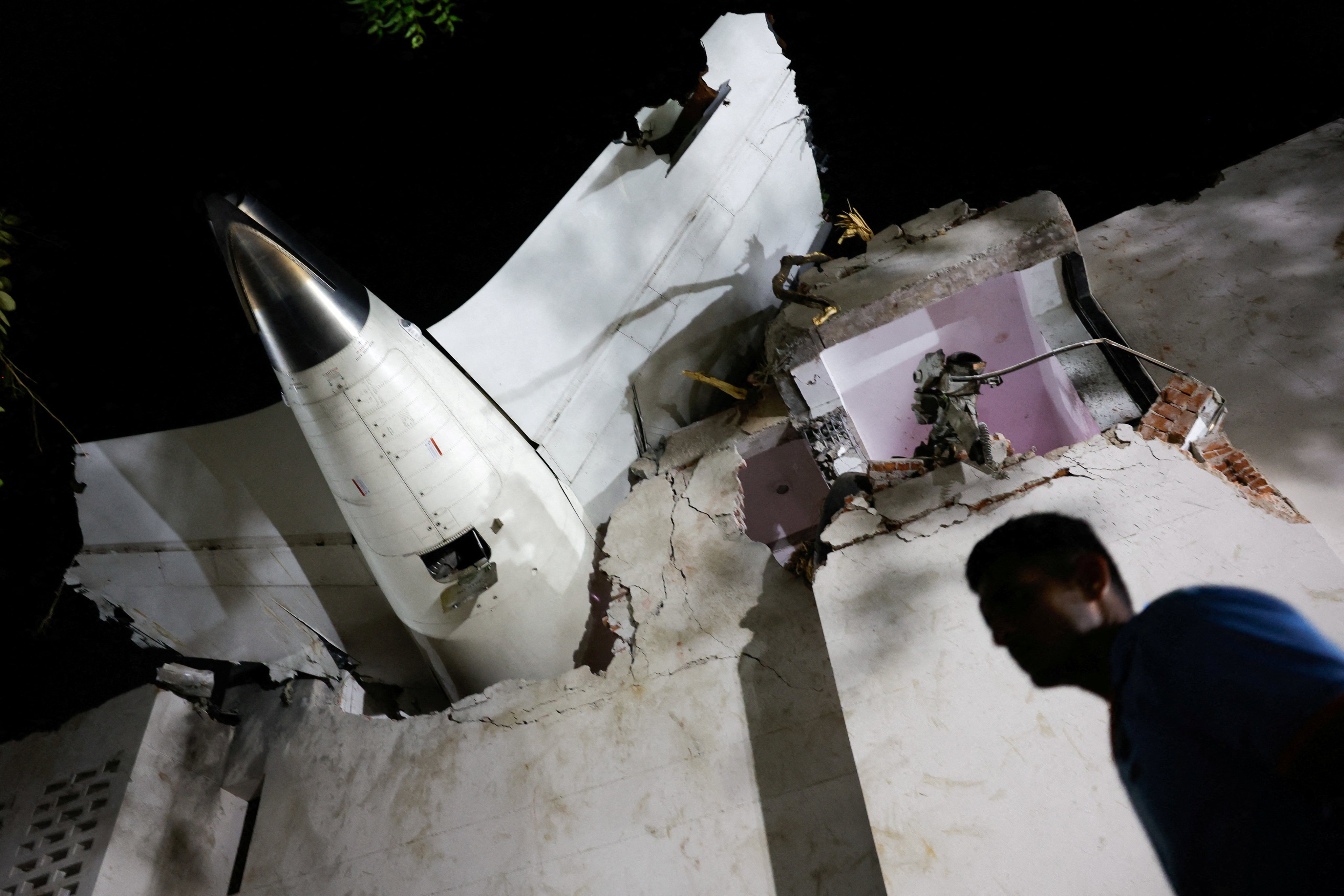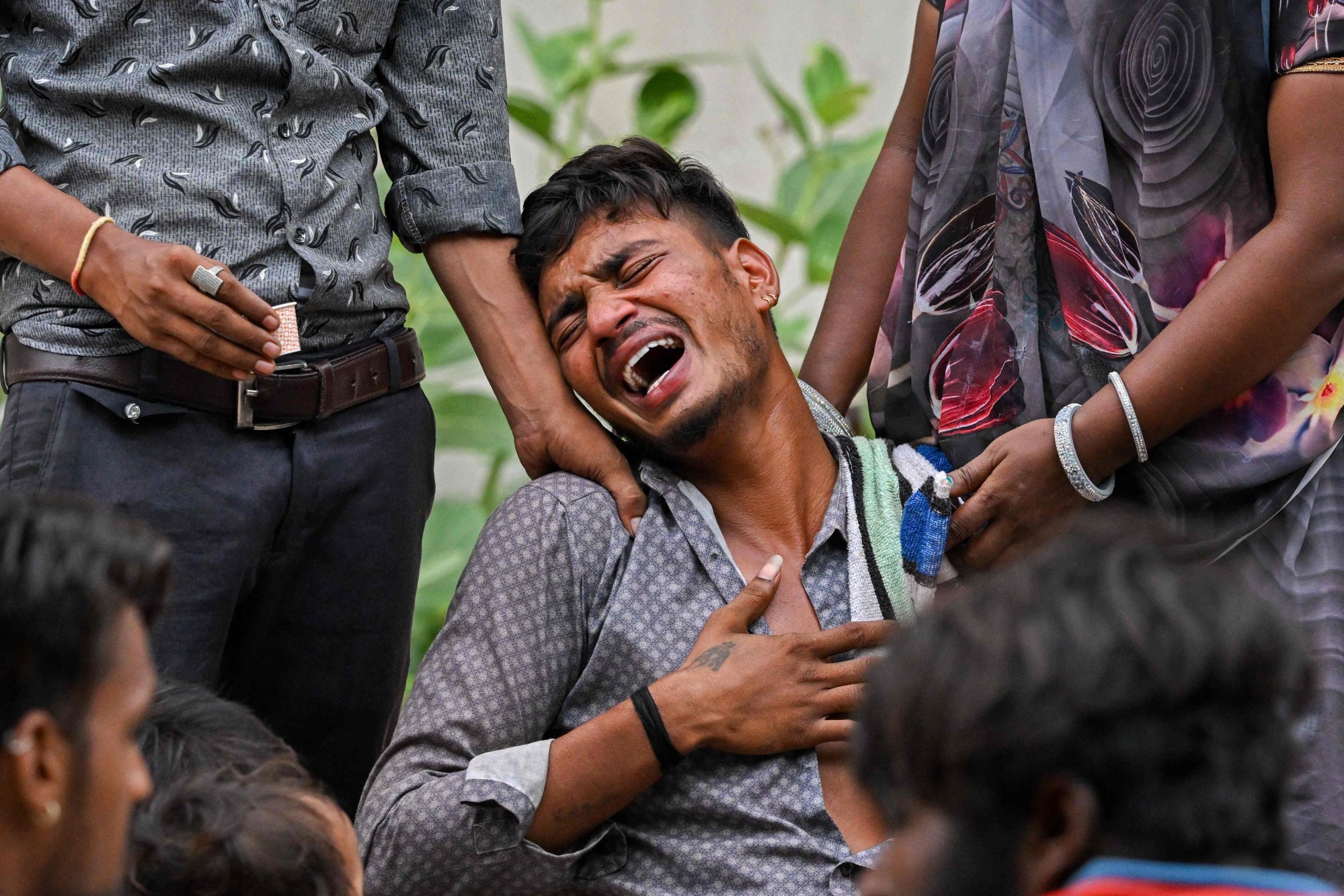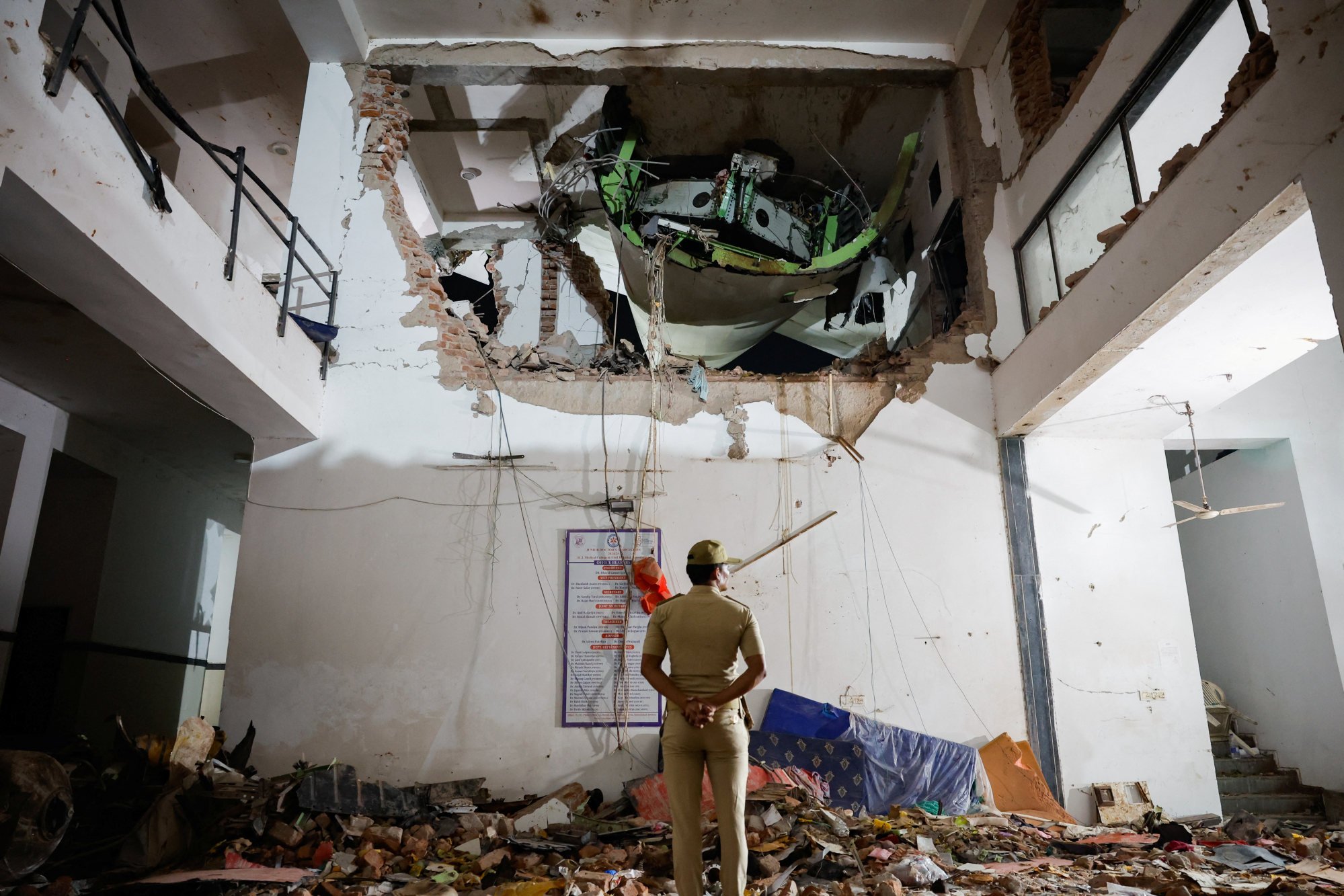Will Air India’s crash in Ahmedabad derail its revival plans?
The airline must hold open investigation into the accident to regain customer trust amid efforts to overhaul the company to spur growth, analysts say

Air India’s crash of a Boeing 787 jet that killed more than 200 people will be a huge setback to the former state-run carrier’s comeback plans after a change in its ownership to the Tata Group three years ago, according to analysts.
The London-bound plane, carrying 242 passengers and crew, went down shortly after taking off from the western Indian city of Ahmedabad. News agencies on Friday reported more than 290 people dead, including those on the ground after the aircraft smashed into a medical college hostel at lunch hour.
The tragedy has raised questions about what went wrong for the Boeing Dreamliner, one of the most modern passenger aircraft in service.
Analysts say a detailed study is needed to pinpoint the cause, but the manner in which the plane heading for Gatwick Airport hit a building and exploded into a fireball is bound to cast doubts about the management of operations.
“It looks like [the pilot] had no power available and could not continue his climb. That is a technical issue. It brings up a whole lot of other issues as well about how the airline is being run,” said Mark D Martin, CEO of aviation consultancy Martin Consulting.
It was the first crash for the Dreamliner, which began flying commercially in 2011, according to the Aviation Safety Network database. The ill-fated plane flew for the first time in 2013 and was delivered to Air India a year later, according to flight-tracking website Flightradar24.
One television channel showed the plane taking off over a residential area and then disappearing from the screen before a huge jet of fire could be seen rising into the sky from beyond the houses.
“Clearly something has gone wrong. We see a crash like this in a fifth-generation aircraft is very unfortunate,” Martin said, adding that a plane like this, which is less than 15 years old, would normally be considered “a very good aircraft”.
While it was too early to tell exactly what led to the disaster, plausible reasons could include engine failure, he said, adding that it appeared from the footage the pilot made several attempts to veer up but could not achieve a continuous thrust.
“It’s shocking that, with qualified crew having extensive experience in flying hours and maintenance, we see a catastrophic incident such as this. The government of India can’t any more be accused of running a bad airline, because Air India is no longer with the government,” Martin said.
US safety officials said they were heading to India to help investigate the accident.
The Indian government was considering grounding Air India’s Boeing 787 fleet, Reuters reported on Friday.
While this was the first 787-8 Dreamliner crash, the jet has been involved in previous investigations. The aircraft is meant to handle longer non-stop routes, similar to the Ahmedabad-London path that the doomed plane was flying, experts say.
“It will definitely hurt. Air India is already facing brickbats in recent times over unpleasant and uncouth behaviour on board its planes, as well as complaints over its services and products. It will prolong the rehabilitation of the airline,” said Shukor Yusof, founder and analyst at Malaysia-based Endau Analytics.

Air India was founded by Tata Group patriarch JRD Tata in the 1930s. It was brought under New Delhi’s control in the 1950s under a nationalisation programme, which led to the mismanagement of an airline with an erstwhile stellar reputation.
After the airline’s ownership changed back to the conglomerate again in 2022, it has been aiming to revive its fortunes and compete against international and domestic carriers such as IndiGo, India’s biggest, with an ambitious fleet expansion and overhaul plan.
The airline has long been weighed down by legacy issues such as its bloated workforce and supply chain woes.
Last year, Air India ordered 100 additional Airbus planes, over and above another in the previous year for 470 Airbus and Boeing jets under its new stewardship – setting out one of the most ambitious fleet expansions globally.
Thursday’s crash is bound to impede the carrier’s growth plans and will demand a transparent programme to restore passenger confidence, observers say.
According to air traffic control at Ahmedabad Airport, the aircraft departed at 1.39pm (local time) from runway 23. It gave a “Mayday” call, signalling an emergency, but thereafter there was no response from the plane.
Flightradar24 also said it received the last signal from the aircraft seconds after it took off. Boeing said it was ready to support Air India following the crash.
“Be as forthcoming as possible when it comes to sharing facts, speak in one voice and show as much compassion and understanding to the affected families and loved ones,” Yusof said, when asked about what it will take to put the carrier back on track.

Having Campbell Wilson as Air India’s CEO, a veteran industry professional who previously held the same position in Singaporean low-cost airline Scoot, is a plus at this challenging time, according to Yusof.
In a video message posted on social media, Wilson assured that the airline was actively working with authorities on emergency response efforts.
“We understand that people are eager for information and please know that we will continue to share accurate and timely information as soon as we can. Anything we report must be factual and not speculative,” he said, adding that investigations would take time.
“Air India will have to conduct thorough and open investigations and release the findings to the public, which will help everyone to understand what exactly happened,” said Shantanu Gangakhedkar, senior consultant for aerospace and defence at Frost & Sullivan.
“Air India will have to showcase to their passengers that they are taking all the steps to make each flight safer,” he added.

The extent to which the incident would hurt the airline will depend on whether the cause of the crash was a mechanical issue with the aircraft or engine, or if it was due to an issue with the pilot or maintenance, Gangakhedkar said.
“It will also depend on how Air India manages the situation,” he added.
Rajeev Kohli, joint managing director of India-based Creative Travel, said the country’s aviation industry had been relatively safe. “We have not had an incident like this in years. Let us wait for the investigation to see what caused the crash.”
“The focus will be on the entire Indian aviation system, not just Air India. An accident of this magnitude necessitates a full review of all operations not just by the airline, but by India’s Ministry of Transport, aviation regulator and the airports authority,” said Gary Bowerman, co-founder of consultancy High-Yield Tourism and founder and managing director of Asia Travel Re:Set, a weekly industry newsletter.
He added that the overriding priority should be on the investigation and the prevention of any future similar cases.
“India is the world’s third-largest air market, so a great deal depends on the speed and thoroughness of the investigation process,” Bowerman said.
The country’s last fatal aviation mishap was in 2020 involving an Air India Express plane, a low-cost arm of the airline, resulting in the deaths of 18 passengers while 172 survived at Kozhikode International Airport in southern India.
One of India’s deadliest disasters was a mid-air collision in November 1996 between a Saudi and a Kazakh jet, which killed all 349 people on board. This incident led to mandatory Airborne Collision Avoidance Systems for all aircraft in Indian airspace starting in January 1999.
Despite improvements in aviation safety, there have been incidents like the Air India Express Flight 812 crash in Mangalore that killed 158 of the 166 people on board in 2010.